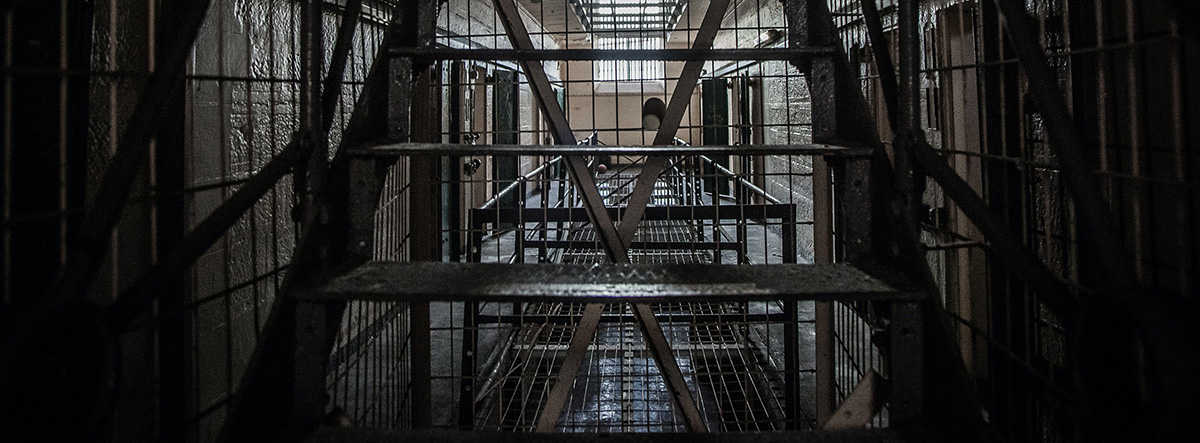Incarceration Trends May 20, 2021
Jurisdictions must take an intersectional approach to legal system transformation if they are to end the misuse and overuse of jails. This means understanding the drivers of overincarceration for any and all populations that have been overrepresented and disproportionately harmed by the criminal legal system—and developing culturally responsive strategies to address them.
The LGBTQ+ population has received strikingly little attention in the criminal justice reform movement, including the Safety and Justice Challenge. In order to address the overrepresentation of queer people in the criminal system, jurisdictions must challenge discrimination against LGBTQ+ people before, during, and after their system involvement, and they must question the impact of their own policies on this community. This is especially urgent as LGBTQ+ people continue to be increasingly targeted for discrimination by other powerful state forces.
Most recently, the current legislative assault on transgender youth shocks the conscience and makes our skin crawl. It targets an already vulnerable group of kids—with a disturbingly high rate of suicidal ideation—for political gain, threatening their physical and mental health and general wellbeing. But while this latest display of cruelty and bigotry is particularly staggering, it is not terribly surprising. The wellspring of transphobia and homophobia in the United States runs deep, far, and wide. And it is rarely disguised.
It took the Supreme Court of the United States until 2020 to hold that it violates the Civil Rights Act of 1964 to fire a person simply for being gay or transgender. In addition to failing to protect, laws targeting the LGBTQ+ community, whether directly or through discriminatory enforcement, have run the gamut. Some laws have been plainly aimed at punishing gay sex, such as the paradigmatic anti-sodomy laws, which existed in many states until the 1970’s and remained in force in others until ruled unconstitutional in Lawrence v. Texas in 1993.
Other laws appear facially neutral but are discriminatory in their enforcement. New York State recently repealed its “walking while trans” law that police used to detain and arrest individuals on suspicion of “loitering for the purposes of prostitution”—a practice so disproportionally used on trans women of color that it is sometimes referred to as “stop-and-frisk for trans women.” Elsewhere, however, the law remains on the books.
Adding insult to injury, there is an emerging trend of attorneys nefariously misgendering trans people in legal proceedings. And if they end up incarcerated, LGBTQ+ people frequently face abuse and ill-treatment in jails and prisons, with one study finding that 40% of transgender people were sexually assaulted while incarcerated in a given calendar year (for a good resource on policies to address this, look here).
In case there was any doubt, this bias and harm transcends the realm of laws and legal systems. Consider the ostensibly non-adversarial space of mental health care. It took the American Psychiatric Association until 1973 to remove the diagnosis of “homosexuality” from its Diagnostic and Statistical Manual (DSM)—and only after an extensive campaign. It then took until June 2019 (the 50th anniversary of the Stonewall riots in New York City) for the American Psychoanalytic Association to issue a formal, “overdue” apology for “past views that pathologized homosexuality and transgender identities.” The association’s press release acknowledged the role played by “the American psychoanalytic establishment” in perpetuating “discrimination and trauma.” Strikingly, one of the earliest examples we can find of court-ordered outpatient mental health treatment as an alternative to incarceration involved conversion therapy for men charged with violating Maryland’s anti-sodomy laws in 1938.1
All told, it is hardly coincidental that—even in 2021—LGBTQ+ people are disproportionately represented at every stage of the criminal legal system. Lesbian and bisexual women are four times more likely to be arrested than straight women. And as Black people have borne the brunt of mass incarceration, so too have Black members of the LGBTQ+ community. Nearly half of Black transgender people have experienced incarceration and 38% have reported being harassed by the police. Made worse by the discrimination that many face in their own homes and communities, LGBTQ+ people are more likely to experience unemployment, poverty, difficulty accessing healthcare, and homelessness, all destabilizing factors that can lead to and prolong their criminal (and civil) legal system involvement.
Despite their overrepresentation in the criminal legal system, LGBTQ+ people have been largely ignored by the justice reform movement. This must change—both at the federal and local level. In addition to legislative changes that can directly or indirectly effect criminal justice and those that can harm or support the dignity and well-being of the LGBTQ+ community, there are many improvements that can be made at the local level as well.
Jurisdictions must take a hard look at—and attempt to correct for—the drivers of LGBTQ+ overrepresentation in their criminal legal systems, creating accountability measures for system actors. It starts with reviewing existing policies, practices, and training protocols to ensure that they are inclusive, respectful, and responsive to the needs of LGBTQ+ people, especially those that are Black, Indigenous, and people of color. System actors must also authentically engage LGBTQ+ people and community organizations in collaborative policymaking and be sure that this representation includes transgender, genderqueer, and gender nonconforming people of color. Jurisdictions should also review their data collection practices and should work with LGBTQ+ organizations to consider more inclusive and representative data policies.
The overrepresentation of LGBTQ+ people in the criminal legal system is a manifestation of the discrimination they face in state legislatures, schools, housing, employment, health care, and sometimes their own families. Discrimination is cumulative and compounding, and LGBTQ+ people are especially vulnerable to harm. It is incumbent upon the criminal legal system to be aware of the points of disparity for people who are LGBTQ+ and to make the changes necessary to do better.

